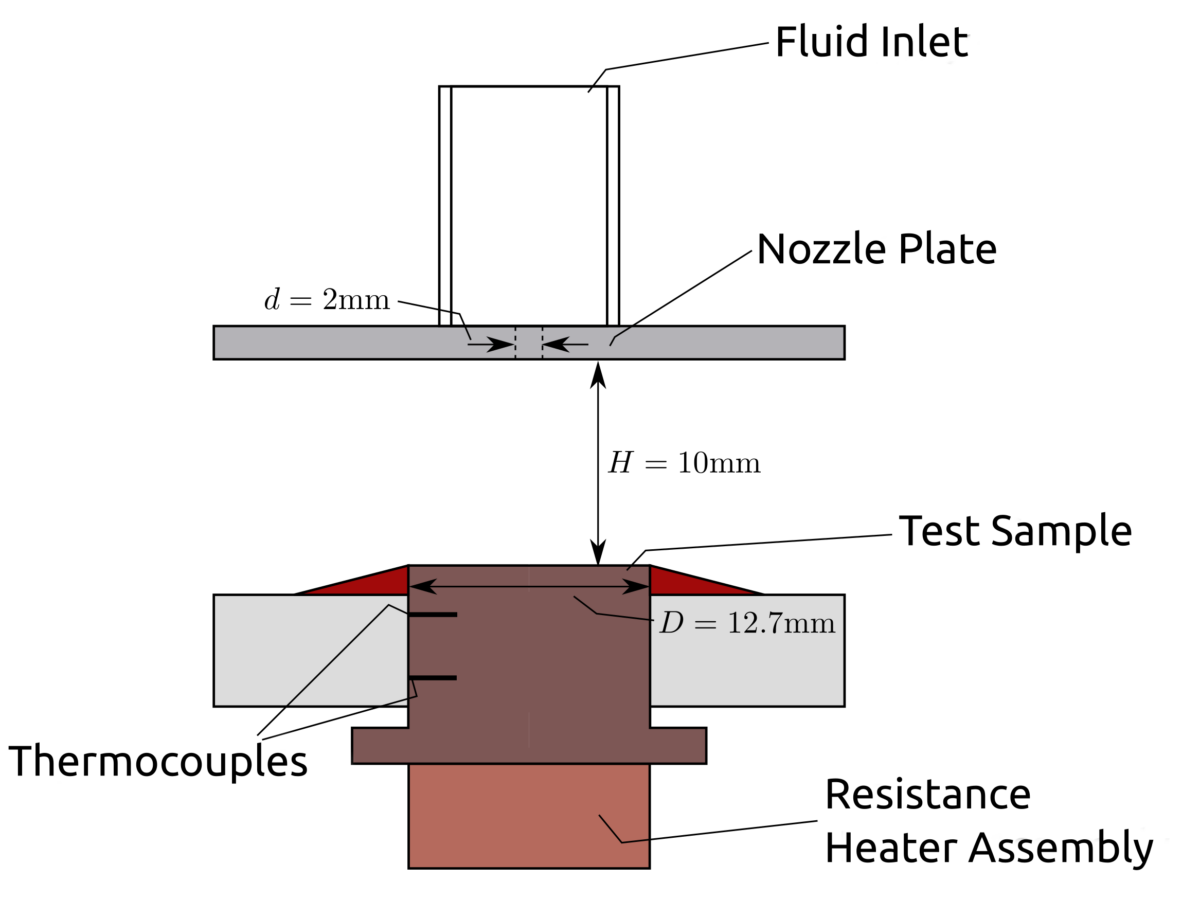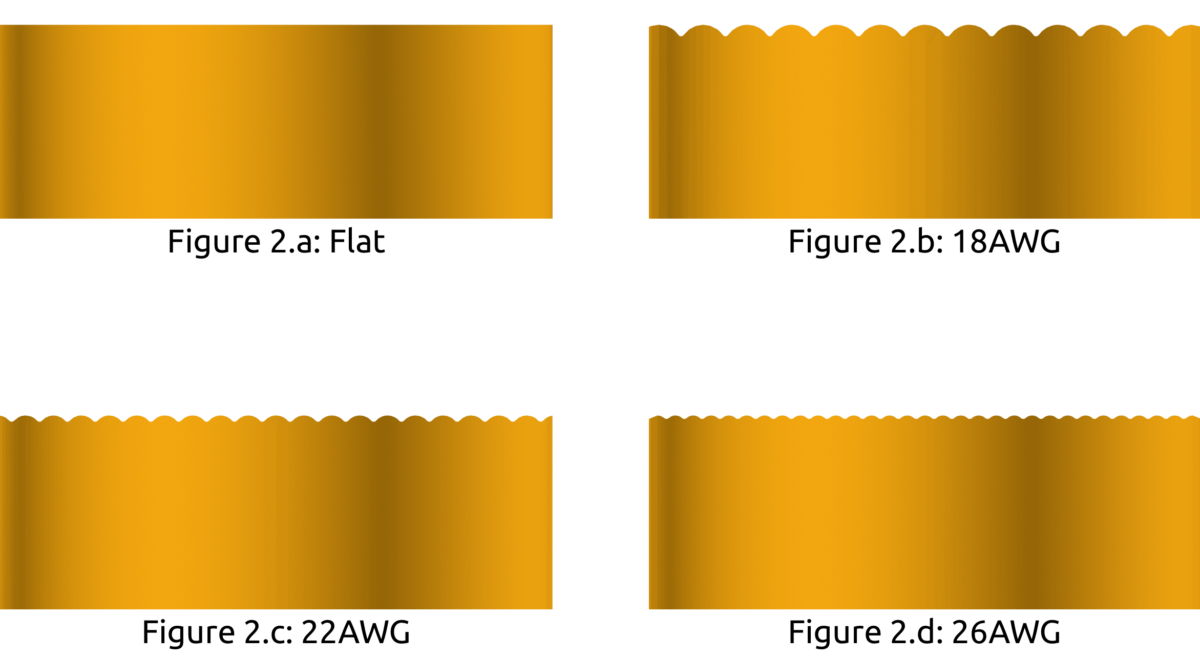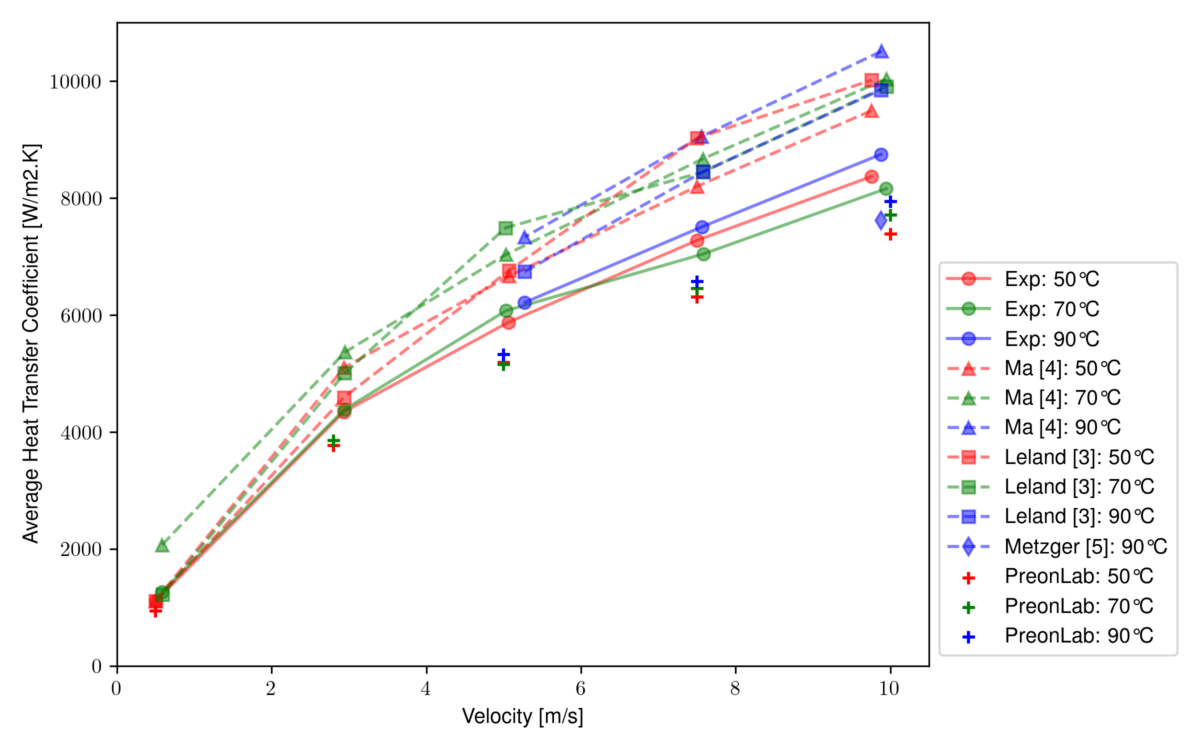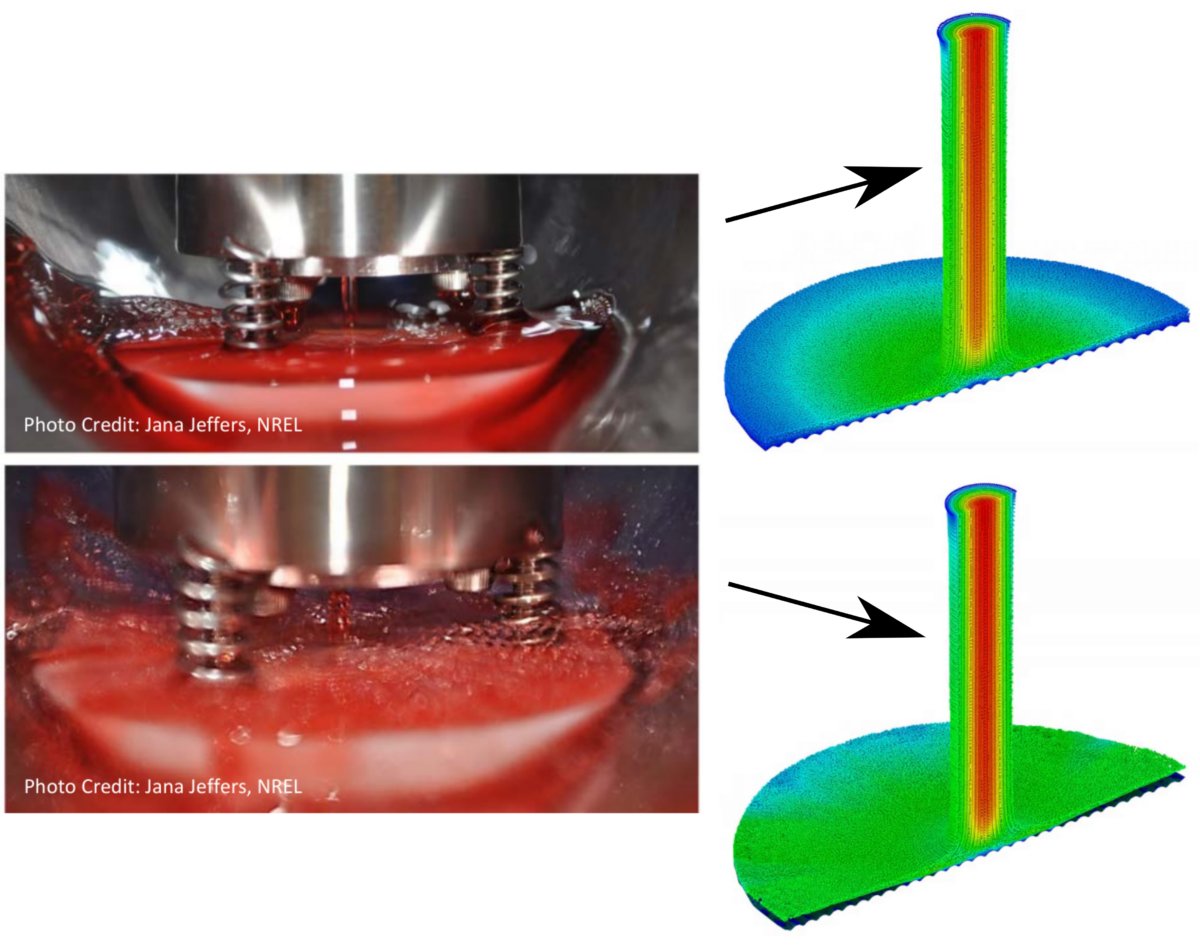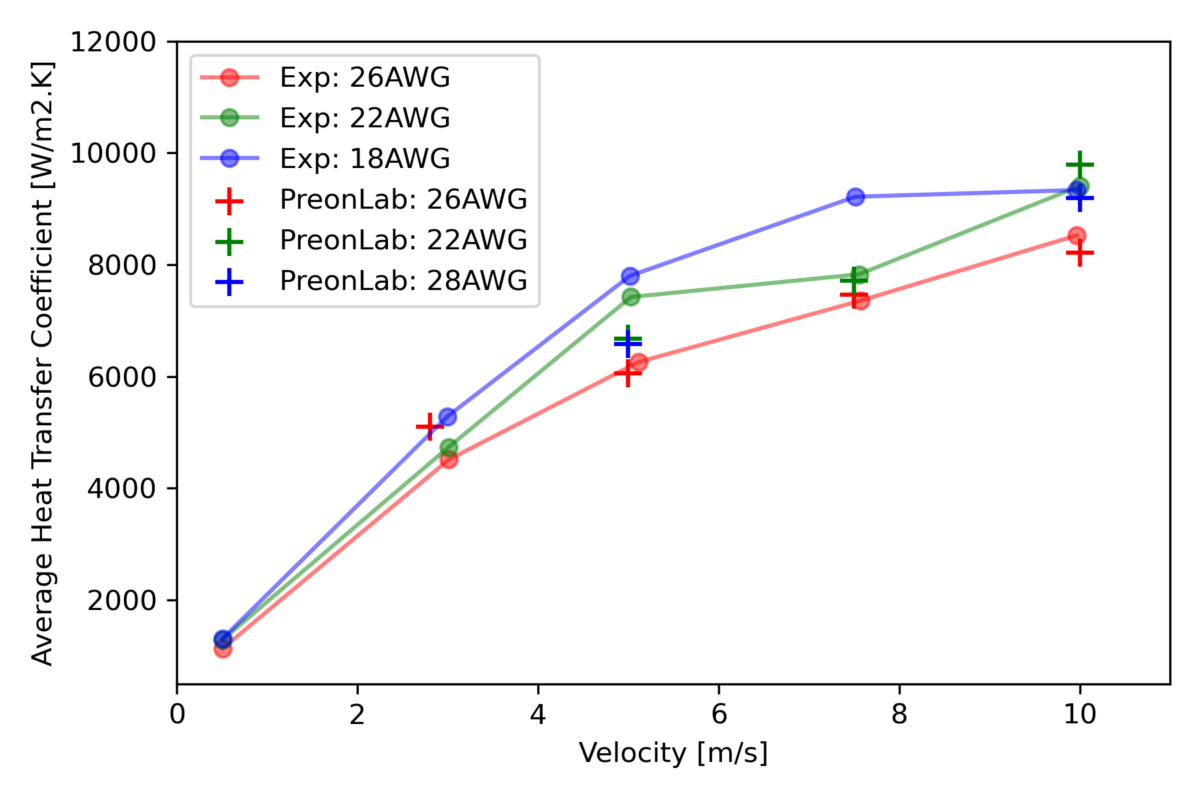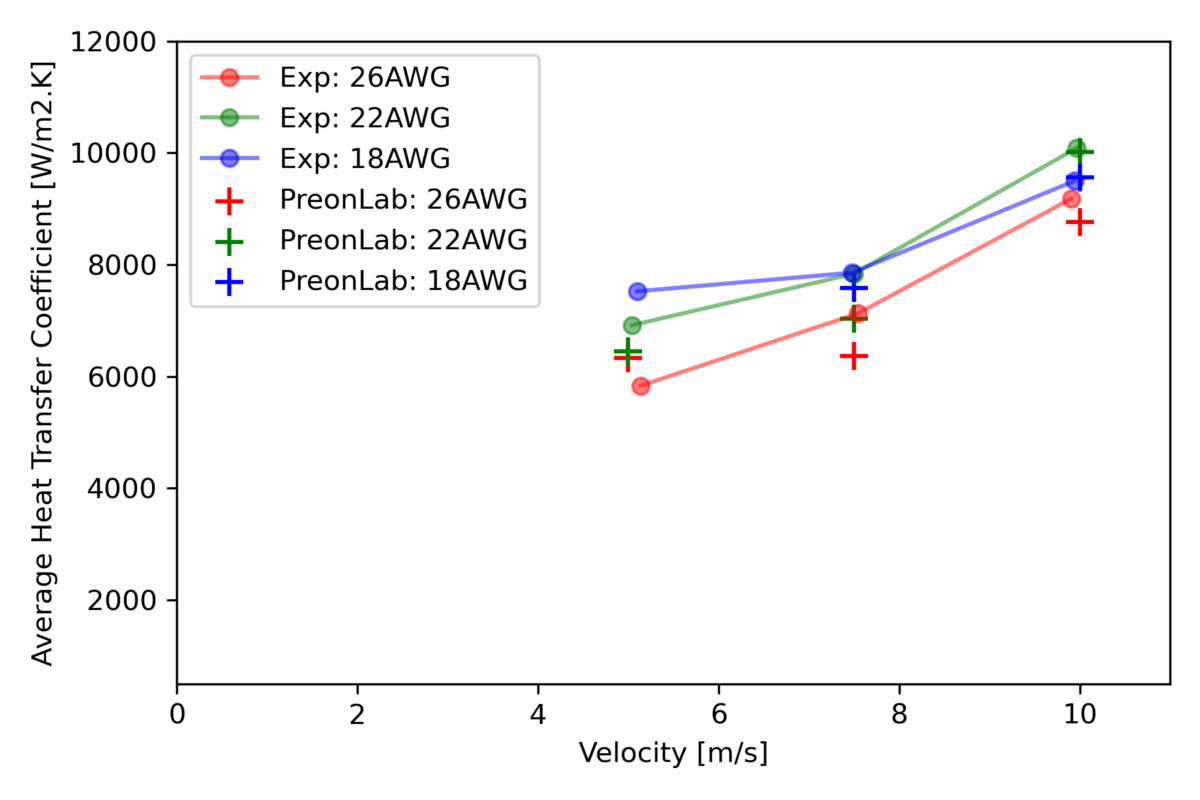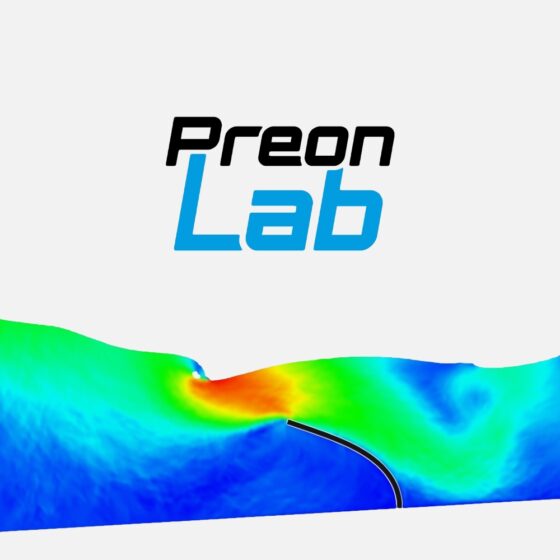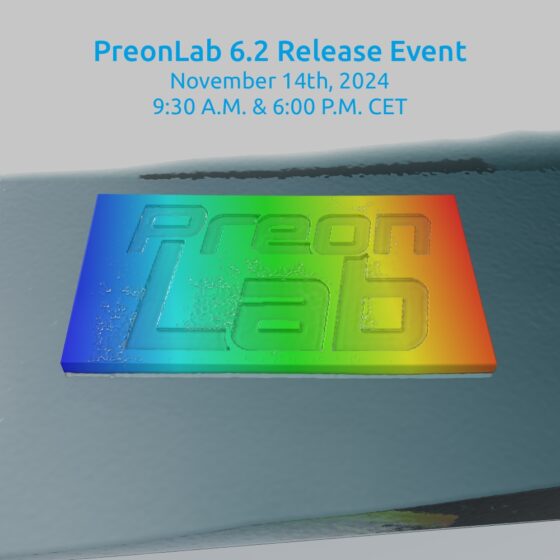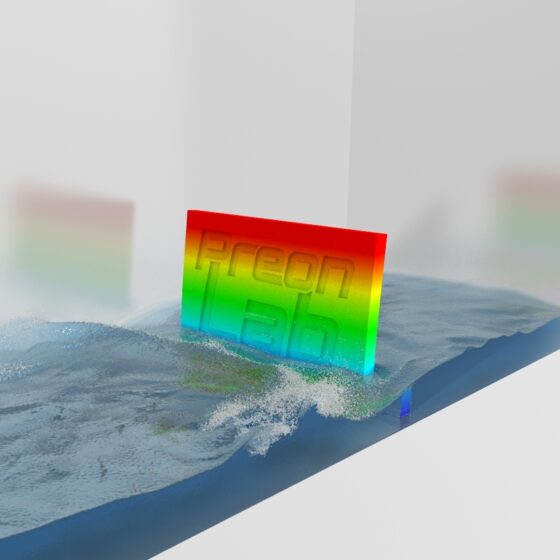Impinging Jet Benchmark for E-Motor Cooling Applications
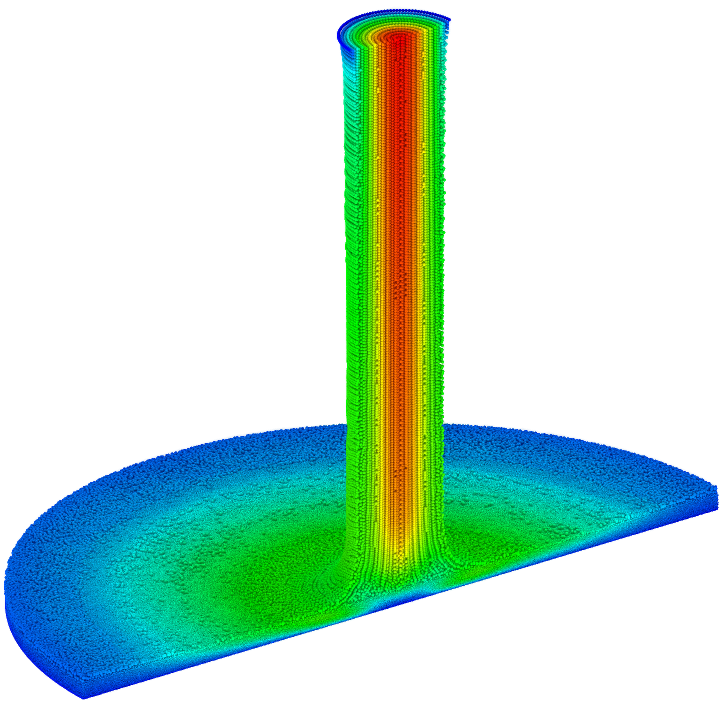
This test case aims to reproduce the results from the experiment done by Bennion and Gilberto [1] with PreonLab. They devised an experiment that measures the heat transfer of an impinging oil jet under different conditions. Some of those conditions are relevant for Electric Motor (E-Motor) cooling applications.
The study is divided into two parts. The goal of the first part is to validate the simulation against both experimental data and existing empirical models on a flat target. For the second part, the flat target is replaced by a textured surface replicating the surface of a copper end-winding inside an E-Motor.
